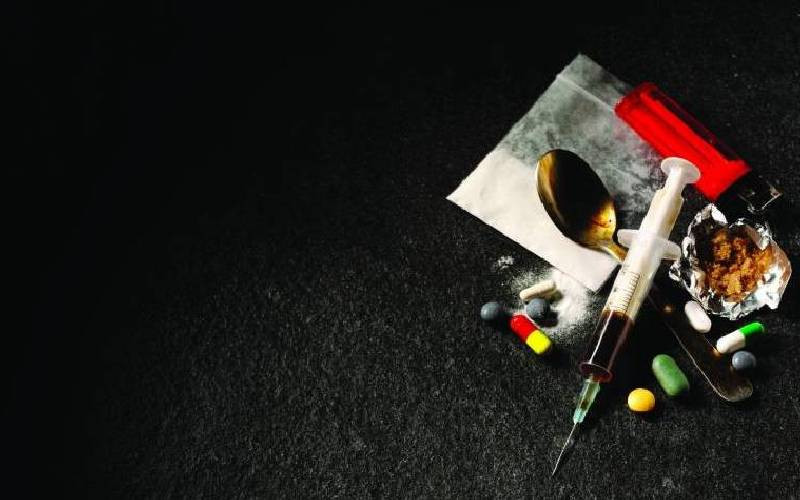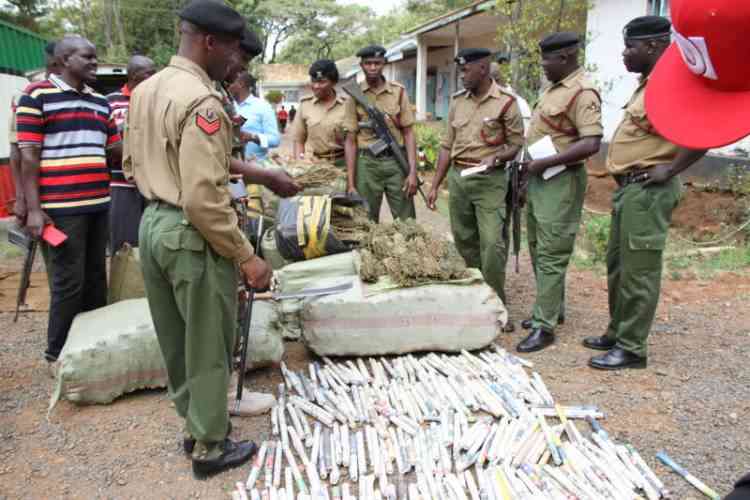By Standard on Saturday team
“Everything’s better with a bag of weed,” twenty-something-year-old Kenyan socialite Huddah Monroe recently tweeted to her 4,877 followers. Very few of them would recognise the tweet as a lyric from a song on American TV series ‘Family Guy’. Rather, the vast majority accept it as a maxim that fits the video vixen-cum-model’s controversial life. Huddah, touted as “Kenya’s own Amber Rose”, speaks often and openly about her love of ‘kush’ (cannabis).
The most widely produced and consumed illicit substance in the world has taken a central place in Kenyan life — so much so that it passes unremarked that a large number of the country’s most high profile youths glorify drugs.
Huddah is not alone: Everywhere you look these days, you will find a youth, socialite or celebrity talking up their love of the herb. Some go as far as to post photo evidence of the joints they are smoking and discuss their drug use with their social media followers. And those confessing or joking about weed are often influential individuals with middle class or upper class backgrounds.
Just last Wednesday, X FM presenter Fareed Khimani joked briefly about smoking the herb in Cape Town before quickly taking back the statement. In this month’s edition of Drum magazine, editor and entertainment writer Julie Masiga, confesses to “blunting less” as she gets older. These candid remarks illustrate how casual social attitudes to marijuana smoking have become.
Among music artists, the love of weed is rarely hidden. In a controversial video for their song ‘Green on the Regular’, Kenya’s youngest hip-hop group Camp Mulla were shown puffing away like the international artistes they look up to. (The video has since been removed from YouTube). DJ Crème de la Crème, rapper Uneek (Smokin like a Rasta) and a host of other artistes have also professed a weed habit in their work. In an interview about his music on KTN’s Straight Up show recently, Mejja spoke of his debate on whether to cut out the “ombitho” scene in his music video for the song ‘Landlord’. In the end, he went with a shot of a neighbour smoking a giant fragrant joint.
This love of ombitho, ndukulu or ndom echoes the example set by numerous international stars, including the usual suspects like Snoop, P Diddy and Lil Wayne, as well as others like Lady Gaga, Rihanna, Drake, Brad Pitt, Justin Timberlake, Whoopi Goldberg and Morgan Freeman. Last weekend, Rihanna tweeted photos of herself rolling what appeared to be a joint of marijuana on a bald man’s head.
Hip hop and pop culture frequently present marijuana use in a positive manner, with messages reinforced on television, in movies, in music lyrics and via all manner of Internet media. And just what is this doing for the uptake of the drug among middle and upper class youth?
Largest hauls
Substance abuse among the youth stands at 60 per cent for alcohol, 58 per cent for tobacco, 23 per cent for cannabis and 22 per cent for khat, according to a survey of youth aged ten to 24 by the National Agency for the Campaign Against Drug Abuse. An independent study by the Great Lakes University in Kisumu confirmed that one in five high school students has tried bhang at least once.
Cannabis use rates in Africa are among the highest worldwide. The continent ranks second in weed production, trafficking and consumption and accounts for a quarter of global seizures. The United Nations Office on Drugs and Crime (UNODC) estimates between two to seven per cent of East Africans aged 15-64 smoke weed in any given year. That’s a cannabis market of some two and nine million people. The continent’s largest hauls by country have been in Kenya, Nigeria and South Africa. But with corrupt authorities letting much of the bhang through, there is enough bhang to keep local youth supplied.
“Young people in Kenya are dramatically influenced by their friends (on drug use),” say Nacada officials. “When their friends use drugs, young men are nearly four times more likely to report using drugs. The same is true for females.
“A young woman is five times more likely to drink and six times more likely to use illegal drugs if her friends do so.”
Social media is playing a key role in driving peer pressure. When Huddah (Al Huddah Shariff) recently grumbled that she was “fiening” for a joint, South Africa based student @DopestChiQa (Cecille Lerato), offered to “pass her the one in her hand”. Lerato, a Twitter bigwig (influential personality with a large following), tweets so often about her alleged cannabis use that when her birthday came round this week, at least one of her followers saw fit to urge her to lay off the kush. Recent messages suggest she has already done so, but her regular habit is common knowledge among her 5,000-plus followers.
“I love weed!” Lerato gushed to
Stay informed. Subscribe to our newsletter
 The Standard Group Plc is a
multi-media organization with investments in media platforms spanning newspaper
print operations, television, radio broadcasting, digital and online services. The
Standard Group is recognized as a leading multi-media house in Kenya with a key
influence in matters of national and international interest.
The Standard Group Plc is a
multi-media organization with investments in media platforms spanning newspaper
print operations, television, radio broadcasting, digital and online services. The
Standard Group is recognized as a leading multi-media house in Kenya with a key
influence in matters of national and international interest.
 The Standard Group Plc is a
multi-media organization with investments in media platforms spanning newspaper
print operations, television, radio broadcasting, digital and online services. The
Standard Group is recognized as a leading multi-media house in Kenya with a key
influence in matters of national and international interest.
The Standard Group Plc is a
multi-media organization with investments in media platforms spanning newspaper
print operations, television, radio broadcasting, digital and online services. The
Standard Group is recognized as a leading multi-media house in Kenya with a key
influence in matters of national and international interest.









